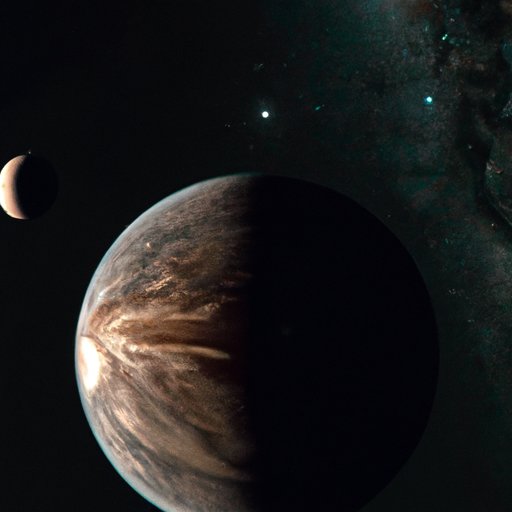I. Introduction
Humans have always been fascinated by the idea of life beyond Earth. The possibility that we might not be alone in the universe has captured our collective imagination for centuries. One of the key prerequisites for extraterrestrial life is the presence of a habitable planet. In this article, we will explore the question of how many planets there are in the Milky Way, and what this means for the search for life beyond our own planet.
The Milky Way, our home galaxy, has a vital role to play in the quest for extraterrestrial life. Understanding its planetary landscape is essential to determining the likelihood of other habitable planets in the universe.
II. Defining the Milky Way: Understanding Our Galaxy’s Planetary Landscape in the Quest for Life Beyond Earth
The Milky Way is a barred spiral galaxy with an estimated diameter of around 100,000 light-years. It contains between 100 and 400 billion stars, including our own Sun. The Milky Way’s planetary landscape is vast, and recent estimates put the total number of planets in our galaxy alone in the tens of billions.
The planetary landscape of the Milky Way plays an important role in the search for life beyond Earth. This is because the formation, composition, and position of planets in a solar system can have a significant impact on the likelihood of habitability.
III. Counting the Planets: A Deep Dive into Astronomical Methods for Estimating the Number of Planets in the Milky Way
Estimating the number of planets in the Milky Way is a complex process. Astronomers use a variety of methods to derive these estimates, including the transit method, the radial velocity method, and the microlensing method. The transit method involves detecting the dip in brightness of a star as a planet passes in front of it, while the radial velocity method measures the wobble of a star caused by the gravitational pull of a planet. The microlensing method, on the other hand, detects the gravitational lensing of a star by a planet.
Each of these methods has its own strengths and weaknesses, and no single method can give an accurate estimate of the total number of planets in the Milky Way. Astronomers must therefore use various methods in combination to derive more accurate estimates.
IV. A Universe of Possibilities: Exploring the Implications of Different Estimations for the Number of Planets in the Milky Way
The estimated number of planets in the Milky Way ranges from tens of billions to several trillions, depending on the method used to derive the estimate. The significance of these various estimates lies in the implications they have for the search for extraterrestrial life. If there are fewer planets in the Milky Way, the likelihood of there being other habitable planets decreases. Conversely, if there are more planets in our galaxy, the possibility of finding other life-forms increases.
The estimated number of planets also has implications for our understanding of the cosmos. The total number of planets in the Milky Way is likely to be staggering, and this would mean that there are countless other worlds, some of which could potentially harbor life.
V. From Exoplanetary Discovery to Galactic Census: Charting the Course of Astronomical Research on Planets in the Milky Way
The study of exoplanets, or planets outside our solar system, has come a long way in recent decades. The development of instruments such as the Kepler telescope has enabled scientists to detect and study thousands of exoplanets, helping us to better understand the planetary landscape of our galaxy. The upcoming James Webb Space Telescope is also expected to revolutionize our understanding of exoplanets.
The technology used to detect planets in the Milky Way is continually evolving, and astronomers are constantly discovering new and innovative ways to detect these distant worlds. In the future, it is likely that we will be able to conduct more detailed surveys of the Milky Way’s planetary landscape, enabling us to gain a better understanding of the prevalence of habitable worlds in our galaxy.
VI. Joining the Dots: What the Latest Discoveries Tell Us About the Potential Prevalence of Life on Planets in the Milky Way
Recent discoveries of exoplanets have shown that there is a wide range of planetary systems in our galaxy. Some exoplanets are similar in size and composition to Earth, while others are gas giants like Jupiter. Some of these planets orbit in the habitable zone of their star, where temperatures are conducive to liquid water and potentially life.
While we have not yet found definitive evidence of life beyond Earth, the discovery of these potentially habitable planets suggests that the likelihood of extraterrestrial life existing somewhere in the universe is high.
VII. Conclusion
The question of how many planets there are in the Milky Way is a complex one, and estimates vary widely. However, what is clear is that our galaxy is home to a staggering number of planets, many of which could potentially harbor life.
